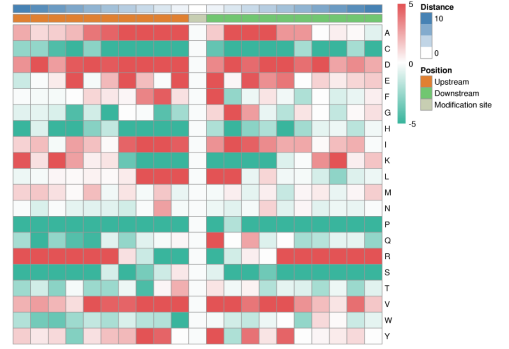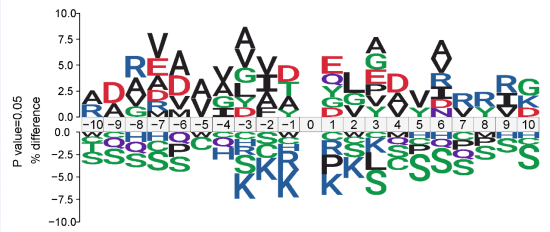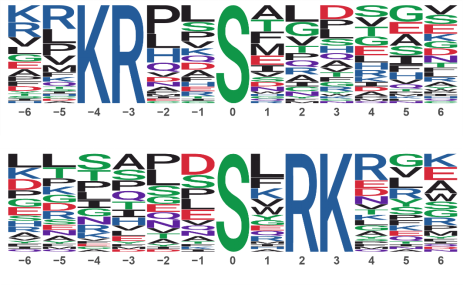Interested in our services
Contact our experts to provide further information



Large-scale modification omics experiments can identify thousands of protein post-translational modification sites. Understanding the potential biological processes causing by the modification is an important research direction of proteomics. The key adjacent residues (which also called “Motif”) that causing specific enzyme substrate interaction is the focus of research, because the partial biochemical preference of an enzyme for a given substrate may be determined by the residues near the modification sites.Motif-x or iceLogo analysis was used to predict the potential motif characteristics of modification sites. The biological motifs with statistical significance were extracted from the surrounding of the post-translational modification sites.

The figure shows the degree score (DS) of frequency change of amino acids near the modification site.

The figure shows the modification site motif feature by iceLogo. The picture shows the motif characteristics of Kbhb locus. The height ratio of amino acid abbreviation letters at a specific position reflects the motif feature. % difference greater than 0 indicates that the frequency of amino acid at this position is higher than that of the background, and less than 0 indicates that the frequency of amino acid at this position is lower than that of the background.

The figure shows the motif feature logo by motif-x. When the number of peptides in a characteristic sequence form is greater than 20, and the p value of statistical test is less than 0.000001, it is considered that this characteristic sequence form is a base sequence of modified peptides. The motif feature is represented by the height ratio of amino acid abbreviation letters at specific locations.
Ketogenesis impact on liver metabolism revealed by proteomics of lysine β-hydroxybutyrylation-2021-Cell Reports
Large-scale Identification and Time-course Quantification of Ubiquitylation Events During Maize Seedling De-etiolation-2019-Genomics Proteomics Bioinformatics
Interested in our services
Contact our experts to provide further information